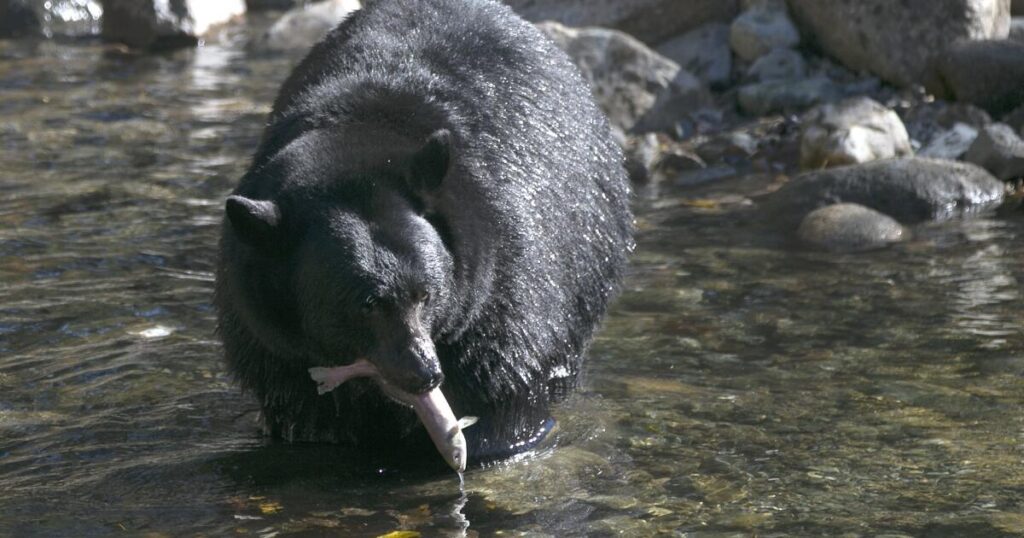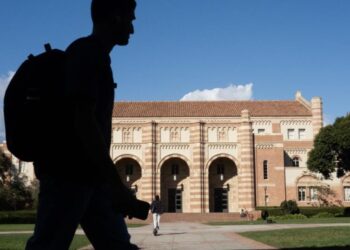Fall is the time of year when bears really begin to think with their stomachs.
Some will double their weight to prepare for wintertime hibernation, often scavenging for calories for up to 20 hours per day. This feeding frenzy, called hyperphagia, drives them farther from their usual range and into neighborhood dumpsters in search of easy meals.
That instinct led one hungry black bear to a South Lake Tahoe home across the Nevada border, surprising an 87-year-old man who had stepped into his garage for firewood before dawn Wednesday.
“The man retreated back into his house, and as he did that, the bear swiped at him and scratched his hand. Then the bear followed him into the home,” said Ashley Zeme, a spokesperson for the Nevada Department of Wildlife.
Moments later, the confused bear scratched the homeowner’s wife before bolting back outside after the couple’s granddaughter opened doors and windows to create an exit. Both residents were treated and released from the hospital with minor injuries.
Zeme said the incident was a rare escalation but one that nonetheless illustrated how fall hyperphagia reshapes bear behavior in the region.
“During hyperphagia, a bear entering a home would be more likely,” she said, noting that bears are seeking a staggering 20,000 to 25,000 calories a day as winter approaches. “Out in the wild, they’re trying to build up their calories through berries and insects. But when they come across garbage in a neighborhood, that’s all the calories they need in one spot.”
The best way to prevent bear encounters, she said, is by securing garbage and removing attractants such as bird feeders, pet food, coolers and barbecue grills.
Hyperphagia typically runs from August through November. During this period, bears dramatically expand their search radius, often pushing deeper into residential areas. Once a bear finds an easy reward, it tends to return and becomes progressively bolder, according to wildlife officials. In the Tahoe Basin, where bears have long learned that residents and vacationers bring dense, reliable calories, hyperphagia coincides with a surge in reports of trash raids, break-ins and, more infrequently, incidents like the one that occurred Wednesday.
“Once they get a food reward every time they go into a neighborhood, they’ll keep coming back for more,” Zeme said. “They have good memories and they’re smart.”
Zeme emphasized that the bear in this case appeared confused and startled, not predatory.
“This isn’t usual territory for a bear,” she said. “They’re not used to being in homes or garages. The bear was probably confused, spooked. Who knows what it was. But this wasn’t normal.”
Wildlife officials said roughly 90% of bear-related incidents originate with unsecured garbage, which is why it’s recommended that residents in bear-prone areas lock up trash and food in wildlife-resistant containers and avoid leaving bags outside. They also advise that locals keep vehicles free of food, lock doors and windows, and use electric fencing to protect beehives and chicken coops.
“We always see more bear activity this time of year,” Zeme said. “Securing attractants is the best way to keep them away.”
The post Bear, in fall feeding frenzy, follows 87-year-old California man into his home appeared first on Los Angeles Times.




